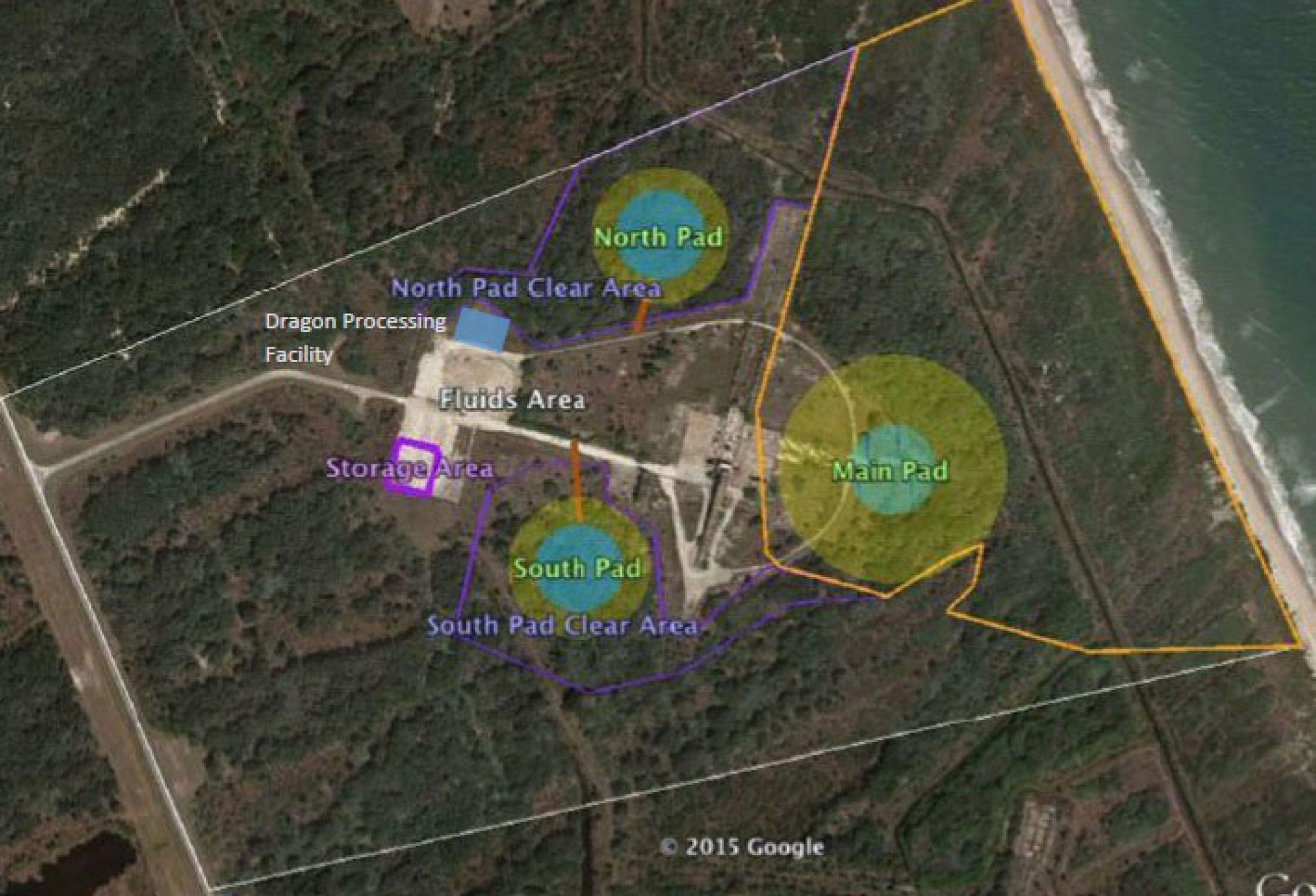More Details on SpaceX’s LZ-1 Expansion
Thanks to sghill over on the NASASpaceFlight forums who uploaded the Supplemental Environmental Assessment for SpaceX’s LZ-1 expansion plans. There are some really nice details hidden among a lot of boring details. Head over to the post if you want to download the full PDF. Here are some interesting bits that caught my eye:

The conceptual site plan for which the original EA was developed included one (1) main pad approximately 200 feet square, and four (4) “contingency” pads, each approximately 150 feet in diameter, with inter-connecting crane paths. However, since that time substantial improvements in the landing vehicle navigation guidance system and radar precision has eliminated the need for the contingency pads, and allowed a slightly smaller apron around a circular concrete landing pad. This SEA addresses the addition of two landing pads, a north pad and south pad, so that LZ-1 can support up to three Falcon Heavy returning first stage boosters, and construction of a Dragon capsule processing facility.
Concurrent with the option to land at an expanded LZ-1, SpaceX may also choose to land one or two stages on an offshore autonomous droneship, as SpaceX has accomplished in the recent past. SpaceX intends to utilize the LZ-1 area for future Dragon capsule processing and testing.
As you can see in the picture, instead of adding small contingency pads, they’re going forward with two full-size pads. I do wonder what the reason was for planning to build contingency pads a few years back. My guess is that it sounded a lot better to skeptics who thought they may come in off-target, but after proving out guidance accuracy with so many approaches and landings, it’s clear that they can better use full-size pads for an entire Falcon Heavy.
The Dragon processing facility mentioned here gets a lot more interesting later on in the document:
SpaceX initiated a facility assessment process with the Air Force in May of 2016 in an attempt to locate an existing site capable of accommodating Dragon capsule processing requirements. In coordination with 45 SW it was determined that locating the processing facility at LZ-1 would allow immediate mission requirements to be met. Long-term CCAFS real estate planning efforts are underway; that effort may result in the development of a new facility at a different location. In this instance, a new location facility would be evaluated under a separate study.
My guess is they’ll use their facilities at the old Spacehab building in Port Canaveral for Falcon 9 first stage returns from sea, and facilities within CCAFS for Dragon processing and flight preparations, as they do now. They may be talking about long-term real estate for the time in the future when there are too many Dragons departing from and arriving at Cape Canaveral to handle.
LZ-1 provides a location to perform propellant servicing operations and post-flight refurbishment for Dragon capsule missions. Following space flight operations, the Dragon capsule would splashdown off the coast of Florida where vehicle recovery would occur. The Dragon capsule would be transported back to the processing facility for post-flight processing and refurbishment. In order to support pre- and post-flight operations, the Dragon capsule would require a processing facility to perform various vehicle checkouts, final flight closeouts, propellant load, propellant unload and propellant servicing operations.
The Dragon capsule would also require a location to perform periodic vehicle static fires in order to test the SuperDraco launch abort and landing system. The Capsule would be fastened to a portable mechanical stand than can be configured to varying heights. The mobile static fire stand would be integrated to the northern edge of the North Pad, and would not be permanently installed.
Thus far, Dragons have only splashed down off the coast of California. This sounds a lot like they’re planning for propulsive landings at LZ-1 in the future. A splashdown off the coast of Cape Canaveral would be the contingency plan for a failed propulsive approach to LZ-1.
 Main Engine Cut Off
Main Engine Cut Off